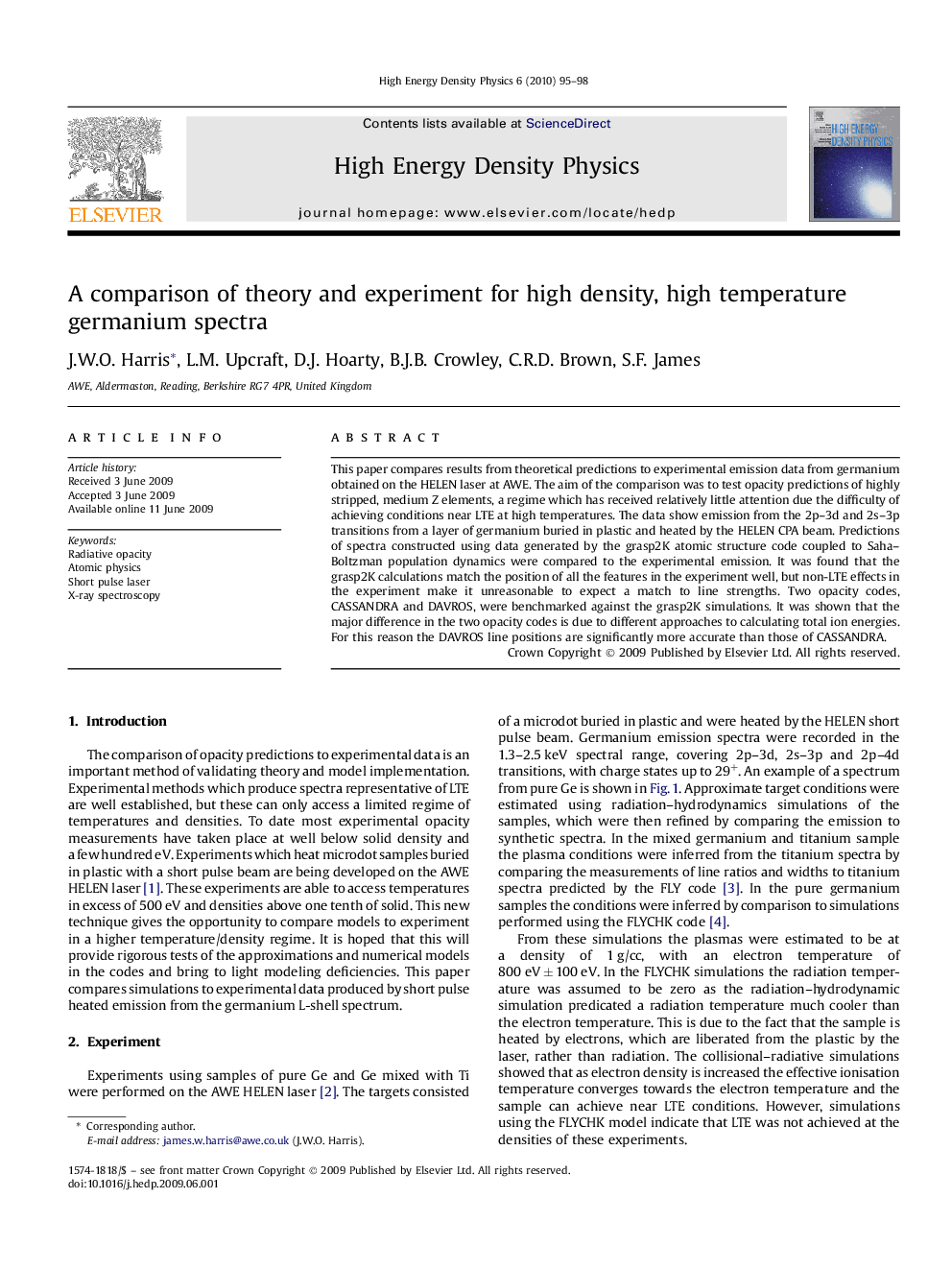| Article ID | Journal | Published Year | Pages | File Type |
|---|---|---|---|---|
| 1772638 | High Energy Density Physics | 2010 | 4 Pages |
This paper compares results from theoretical predictions to experimental emission data from germanium obtained on the HELEN laser at AWE. The aim of the comparison was to test opacity predictions of highly stripped, medium Z elements, a regime which has received relatively little attention due the difficulty of achieving conditions near LTE at high temperatures. The data show emission from the 2p–3d and 2s–3p transitions from a layer of germanium buried in plastic and heated by the HELEN CPA beam. Predictions of spectra constructed using data generated by the grasp2K atomic structure code coupled to Saha–Boltzman population dynamics were compared to the experimental emission. It was found that the grasp2K calculations match the position of all the features in the experiment well, but non-LTE effects in the experiment make it unreasonable to expect a match to line strengths. Two opacity codes, CASSANDRA and DAVROS, were benchmarked against the grasp2K simulations. It was shown that the major difference in the two opacity codes is due to different approaches to calculating total ion energies. For this reason the DAVROS line positions are significantly more accurate than those of CASSANDRA.
